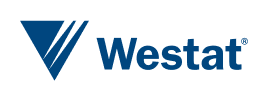This website uses cookies so that we can provide you with the best user experience possible. Cookie information is stored in your browser and performs functions such as recognizing you when you return to our website and helping our team to understand which sections of the website you find most interesting and useful.
As children across the country are getting ready to go back to school, the National Association of Community Health Centers is promoting National Health Center Week on August 6-12. Health Centers (HCs) (also called Federally Qualified Health Centers or FQHCs), are a very important piece of our nation’s health care services. They provide access to high-quality, comprehensive primary health care, often including behavioral health and dental care, regardless of patients’ ability to pay. HCs receive federal funding from the Health Resources and Services Administration (HRSA) under Section 330 of the Public Health Service Act and are governed by community boards. And those children headed back to school? HCs run almost half of all school-based health centers (more than 1,100), as noted in Twenty Years of School-Based Health Care Growth and Expansion, increasing access to comprehensive primary care for children and their families in a trusted environment.
Need for Health Center Services in the U.S.
The U.S. still lags behind most developed countries in key health indicators, such as maternal and infant mortality. Adolescent indicators of health and well-being worsened significantly in the past decade, including protective sexual behaviors, experiences of violence, and mental health. Additionally, substantial disparities persist in health outcomes based on race, ethnicity, geography, and income. Many of these negative outcomes could be prevented through regular, high-quality health care that is accessible to all. According to Uniform Data System (UDS) data, which HCs are required to report annually, 1,373 HCs served more than 30 million patients in 2021 of whom:
- 90% were low-income (at or below 200% of federal poverty guideline)
- 63% were racial or ethnic minority
- 29% were less than 18 years old
- 24% preferred to be served in a language other than English
- 19% were public housing residents
- 4% were people experiencing homelessness
Research has shown that HCs are an effective strategy for improving health outcomes and disparities. The UDS Mapper shows areas where low-income people use FQHC services, clearly indicating the widespread use of HCs for health care across the nation. It is essential to continue supporting HCs through funding, policies, partnerships, technical assistance, and other resources to ensure that this primary health care safety net grows and evolves to meet communities’ needs across the country.
How Westat Supports Health Centers
Westat provides a range of resources and services to support the success of FQHCs, and National Health Center Week is a great time to spotlight some of these.
One example of Westat support is our work with the HRSA-funded Health Information Technology, Evaluation, and Quality (HITEQ) Center. We develop resources and training materials to help HCs select, implement, and optimize electronic health records (EHRs); use electronic patient engagement tools, including mobile technologies and patient portals; and create data dashboards for continuous improvement. Another example is Westat’s evaluation of the HRSA-funded Nurse Corps program that seeks to increase the number of nurses serving in Health Professional Shortage Areas, including HCs.
Westat also supports the Network for Community-Engaged Primary Care Research (NCPCR), which is part of the Community Engagement Alliance (CEAL) funded by the National Institutes of Health (NIH). NCPCR conducts community-engaged research in primary care settings to address health inequities, and the network includes multiple HCs. Westat provides data coordination, evaluation, technical assistance, and communications to support NCPCR.
Learn More
Use the UDS Mapper to identify FQHCs in your area. Learn and share information with others about the services and community events that your local FQHC provides during National Health Center Week and beyond!
See the following resources for more information.
- U.S. Health Care from a Global Perspective, 2022: Accelerating Spending, Worsening Outcomes
- Youth Risk Behavior Survey: Data Summary & Trends Report (PDF)
- Federally Qualified Health Centers (FQHCs)
- Community Engagement Alliance (CEAL)
Contributed by Westat experts Nancy Hood, PhD, Principal Research Associate, and Kerry Grace Morrissey, MPH, Vice President, both of Public Health.
Focus Areas
Health Communications Maternal Health Public Health Real-World DataCapabilities
Evaluation Technical Assistance-
Perspective
Westat Work Shines at 2024 APHSA EMWB ConferenceSeptember 2024
Westat human services experts recently presented at the American Public Human Services Association (APHSA)’s Economic Mobility and Well-Being (EMWB) Conference in Portland, Oregon. At the…
-
Perspective
Westat Tools Help Protect Child PassengersSeptember 2024
Vehicle crashes are a major cause of injuries and fatalities among children, a problem safety advocates in the U.S. acknowledge and work to minimize by…
-
Perspective
International Overdose Awareness Day: August 31, 2024August 2024
Overdose continues to impact the lives of so many around the world. The theme of the 2024 International Overdose Awareness Day, August 31, 2024, is…



